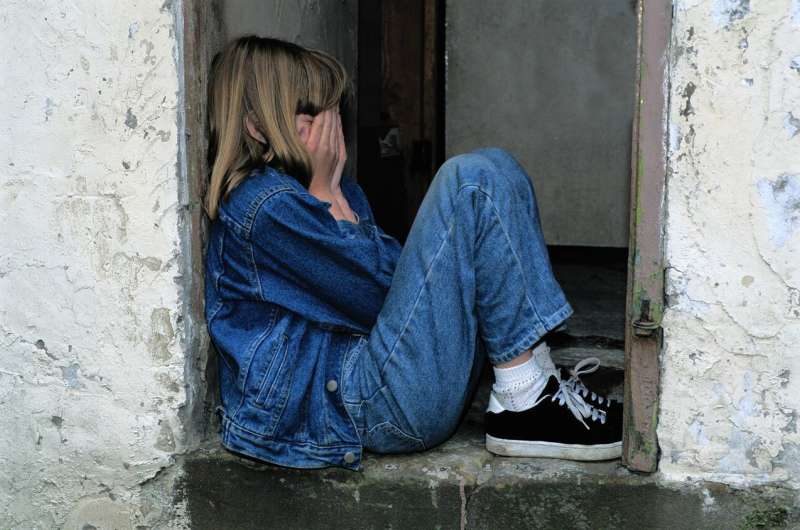nexium agranulocytosis

Adults who were victims of gunshot, stab, and assault wounds as children had higher rates of PTSD
A study of young adults who were victims of violent injuries as children found significantly higher levels of post-traumatic stress disorder (PTSD) in this group than the general population.
The study—conducted by University of Rochester Medical Center (URMC) researchers—surveyed 24 respondents who were victims of gunshot, stab, or assault wounds as children between the years of 2011 and 2020. Of the participants, 15 suffered a gunshot wound, eight suffered a stab wound, and one was assaulted. Respondents were primarily teenagers at the time of injury, with a median age of 16.6 years. An average of six years had passed from the initial injury to the time respondents were contacted for the study.
Ten (41.7%) of these respondents screened positive for probable PTSD, can i take allegra 24 hour and benadryl significantly higher than the 6.8% of the general population that is typically diagnosed with PTSD. Patients who screened positive reported at least three of the following five traits:
- Nightmares or intrusive thoughts;
- Avoiding thinking about or being in situations that remind them of the event(s);
- Constantly feeling on-guard, watchful, or startled;
- Feeling numbness or detachment to people, activities, or surroundings;
- Feeling guilt or blaming yourself or others for the event or problems from the event.
In addition, 46% of respondents reported substance abuse in the past 30 days (other than alcohol or prescription medications) compared to approximately 13% of the general population, while nearly 17% reported persistent symptoms related to their injury.
These lasting physical and mental effects emphasize the need for hospitals, community organizations, and social support networks to work together to help monitor these patients long-term, according to lead author Nicole A. Wilson, Ph.D., MD, assistant professor in the departments of Surgery, Pediatrics, and Biomedical Engineering at URMC.
“The big take-home message is that we need to be doing better at following people who have these types of injuries, whether from gunshots or other violent acts, and we need to be assisting them and offering resources,” she said.
During this study, which was published in the Journal of Pediatric Surgery, respondents were offered resources to help with the physical and mental effects of their injuries. Nearly 63% accepted this offer, indicating that there is a high demand for support among this population.
“With any patient, there’s a range of materials available to help, but sometimes we are limited as clinicians as we can only control what happens when they are in the hospital,” said Wilson.
Violence victims at UR Medicine Golisano Children’s Hospital (GCH) are referred to Pathways to Peace—a street-level team that provides support and nonviolent alternatives for youth who are resorting to violence to settle disputes or becoming involved in gangs and drugs—but many decline this option.
The main reason why patients decline this option is unclear, according to Wilson, but she speculates that families might find this option intrusive, or that long-term mistrust of the healthcare system from historically-marginalized communities prevents them from embracing partnerships offered by the hospital.
“I think it would be helpful if we had a broader range of interventions and resources we could offer, as certain families may prefer a different service or approach,” said Wilson. “Additional funding, research, and time will help us develop these options.”
There is an effort to significantly expand this initial research with a follow-up collaboration between GCH and several other Upstate and Western New York children’s hospitals. Wilson hopes this collaboration will produce a more robust respondent pool, with more control groups, and ultimately help these institutions secure long-term funding to continue to study this topic.
“Using this type of research at a larger scale, we can also look at the role of social determinants of health and socio-economic conditions, and we can also try to procure funding for additional interventions,” said Wilson.
In addition, GCH’s recent designation as a Level 1 Trauma Center has given the institution a mandate to engage in expanded community partnerships to address youth gun violence and educate other trauma centers.
Wilson believes that consistent availability of follow-up behavioral health resources could significantly help youth with the fallout effects of violence.
“In an ideal world, there would be a mechanism where they could automatically see a counselor in three months,” she said.
More information:
Naomi S. Ganpo-Nkwenkwa et al, Long-term functional, psychological, emotional, and social outcomes in pediatric victims of violence, Journal of Pediatric Surgery (2022). DOI: 10.1016/j.jpedsurg.2022.07.021
Journal information:
Journal of Pediatric Surgery
Source: Read Full Article
